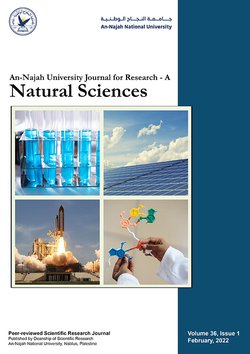Search for Resistance to Egyptian Broomrape (Orobanche Aegyptiaca) in Tomato Germplasm
Authors:
Article info
2015-01-20
2015-06-30
251 - 268
Keywords
- Lycopersicon Spp.
- Tomato.
- Level of Resistance
- Orobanche Aegyptiaca
Abstract
This experiment was conducted to compare the level of resistance to Orobanche aegyptiaca (also known as broomrape) in a collection of sixty wild and cultivated tomato spices. One commercial susceptible variety ‘Samara’ was used as control. The experiment was performed in the framework of Complete Randomized Block Design (CRBD), with three replicates. Two plants from each accession were transplanted into open field in 2009. Three traits were studied including days to first appearance of Orobanche shoots, weakness of tomato plants (vegetative growth) and number of emerged Orobanche shoots per tomato plant. Number of Orobanche shoots per tomato plant ranged from 3.8 to 9.2 shoots compared with the susceptible check, with an average of 6 emerged Orobanche shoots per plant. The accessions were divided into three clusters. Accessions within the first cluster could be considered as the most resistant accessions in the collection since the average number of Orobanche shoots per tomato plant was low (4.49) and at the same time tomato plants were very strong (weaknesses value = 2.26). Further histological studies to understand the mechanism of resistance in these accessions would be advisable.
Sawafta, M., & Shtaya, M. (2016). Search for Resistance to Egyptian Broomrape (Orobanche Aegyptiaca) in Tomato Germplasm. An-Najah University Journal for Research - A (Natural Sciences), 30(2), 251–268. https://doi.org/10.35552/anujr.a.30.2.1278
[1]M. Sawafta and M. Shtaya, “Search for Resistance to Egyptian Broomrape (Orobanche Aegyptiaca) in Tomato Germplasm,” An-Najah University Journal for Research - A (Natural Sciences), vol. 30, no. 2, pp. 251–268, Jun. 2016, doi: 10.35552/anujr.a.30.2.1278.
Sawafta, Mohammad, and Munqez Shtaya. “Search for Resistance to Egyptian Broomrape (Orobanche Aegyptiaca) in Tomato Germplasm.” An-Najah University Journal for Research - A (Natural Sciences), vol. 30, no. 2, June 2016, pp. 251–68. Crossref, https://doi.org/10.35552/anujr.a.30.2.1278.
1.Sawafta M, Shtaya M. Search for Resistance to Egyptian Broomrape (Orobanche Aegyptiaca) in Tomato Germplasm. An-Najah University Journal for Research - A (Natural Sciences) [Internet]. 2016 Jun;30(2):251–68. Available from: http://dx.doi.org/10.35552/anujr.a.30.2.1278
Sawafta, Mohammad, and Munqez Shtaya. “Search for Resistance to Egyptian Broomrape (Orobanche Aegyptiaca) in Tomato Germplasm.” An-Najah University Journal for Research - A (Natural Sciences) 30, no. 2 (June 2016): 251–68. https://doi.org/10.35552/anujr.a.30.2.1278.
البحث عن مصادر مقاومة لطفيل الهالوك في محصول البندورة
المؤلفون:
معلومات المقال
2015-01-20
2015-06-30
251 - 268
الكلمات الإفتتاحية
- Lycopersicon Spp.
- Tomato.
- Level of Resistance
- Orobanche Aegyptiaca
الملخص
أجريت هذه التجربة بهدف مقارنة مستويات مقاومة مجموعة من أصناف البندورة العادية والبرية لطفيل الهالوك. أستخدم في التجربة 60 نوعا من البندورة العادية والبرية بإلاضافة إلى صنف تجاري (سمارة) كشاهد حساس لطفيل الهالوك. أجريت التجربة في بلدة قباطية في محافظة جنين في الموسم الزراعي 2009. زرعت الأشتال في الحقل المكشوف بتاريخ 2009/04/20 وفق النظام العشوائي التام في ثلاث مكررات، ومثل كل نوع من أنواع البندورة بنبتتين في كل مكرر. لم يتم إجراء أي نوع من العدوى لأرض التجربة كونها معروفة بشدة إصابتها بطفيل الهالوك. خلال موسم النمو تم تسجيل موعد ظهور نباتات طفيل الهالوك حول نباتات البندورة، وكذلك قوة النمو الخضري لنباتات البندورة والعدد النهائي لنباتات طفيل الهالوك حول نباتات البندورة وذلك في أخر الموسم الزراعي. أظهرت النتائج تفاوتا في مدى مقاومة أصناف البندورة لطفيل الهالوك حيث تراوح مدى المقاومة ما بين ضعيفة الى متوسطة. كان معدل عدد نباتات طفيل الهالوك الظاهرة حول نباتات الشاهد (صنف سمارة) 6 نباتات، بينما بلغ عدد نباتات الهالوك الظاهرة حول بقية أنواع البندورة المستخدمة في التجربة بين 3.8 – 9.2 وبمعدل 5.7نبات لكل صنف. أظهرت النتائج أنه يمكن تقسيم أنواع البندورة المستخدمة في التجربة الى ثلاث مجموعات. يمكن إعتبار الأصناف الواقعة ضمن المجموعة الأولى (22 صنف) بأنها أكثر الأصناف مقاومة لطفيل الهالوك حيث بلغ معدل عدد نباتات الهالوك النابتة 4.49 نباتات وبنفس الوقت كانت نباتات البندورة ذات مجموع خضري قوي. نظراً لتأثر طفيل الهالوك بالعوامل الجوية والبيئية الأمر الذي يستدعي إجراء مزيد من التجارب بهدف تأكيد النتائج والعمل على إدخال هذه الأصناف كأصول للبندورة للحد من تأثير طفيل الهالوك على محصول البندورة.
Sawafta, M., & Shtaya, M. (2016). Search for Resistance to Egyptian Broomrape (Orobanche Aegyptiaca) in Tomato Germplasm. An-Najah University Journal for Research - A (Natural Sciences), 30(2), 251–268. https://doi.org/10.35552/anujr.a.30.2.1278
[1]M. Sawafta and M. Shtaya, “Search for Resistance to Egyptian Broomrape (Orobanche Aegyptiaca) in Tomato Germplasm,” An-Najah University Journal for Research - A (Natural Sciences), vol. 30, no. 2, pp. 251–268, Jun. 2016, doi: 10.35552/anujr.a.30.2.1278.
Sawafta, Mohammad, and Munqez Shtaya. “Search for Resistance to Egyptian Broomrape (Orobanche Aegyptiaca) in Tomato Germplasm.” An-Najah University Journal for Research - A (Natural Sciences), vol. 30, no. 2, June 2016, pp. 251–68. Crossref, https://doi.org/10.35552/anujr.a.30.2.1278.
1.Sawafta M, Shtaya M. Search for Resistance to Egyptian Broomrape (Orobanche Aegyptiaca) in Tomato Germplasm. An-Najah University Journal for Research - A (Natural Sciences) [Internet]. 2016 Jun;30(2):251–68. Available from: http://dx.doi.org/10.35552/anujr.a.30.2.1278
Sawafta, Mohammad, and Munqez Shtaya. “Search for Resistance to Egyptian Broomrape (Orobanche Aegyptiaca) in Tomato Germplasm.” An-Najah University Journal for Research - A (Natural Sciences) 30, no. 2 (June 2016): 251–68. https://doi.org/10.35552/anujr.a.30.2.1278.
An-Najah National University
Nablus, Palestine
Nablus, Palestine
- P.O. Box
- 7, 707
- Fax
- (970)(9)2345982
- Tel.
- (970)(9)2345560
- (970)(9)2345113/5/6/7-Ext. 2628
- [email protected]
- EIC
- Prof. Ismail Warad
An-Najah University Journal for Research - A (Natural Sciences) by An-Najah University, Nablus, Palestine is licensed under CC BY-NC 4.0
